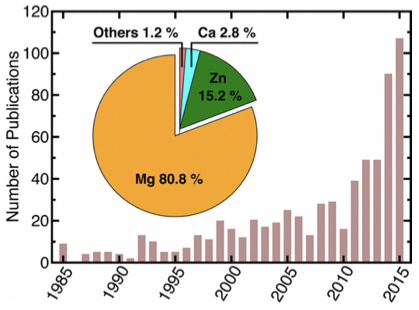Energy storage technologies are key for a clean energy economy but currently are in need of considerable advancements in energy density beyond the metrics of commercial Li-ion batteries. The rapidly expanding field of nonaqueous monovalent and multivalent intercalation batteries offers (see Figure 1) a promising way to overcome safety, cost, and energy density limitations of the current battery technology.

Figure 1: Number of publications from 1985 until 2015 featuring multivalent electrochemistry.[1]
We actively work to advance the development of novel monovalent (Li and Na) multivalent ion (Mg, Zn and Ca) batteries by leveraging advanced computational materials science. We study the dynamic of multivalent-ion during stripping and deposition at the anode electrodes, the intercalation processes in high-voltage positive materials by unveiling complex features in their compositional phase diagrams. Our research also focuses on identified the bottlenecks of multivalent transport in these electrodes.
Relevant references
